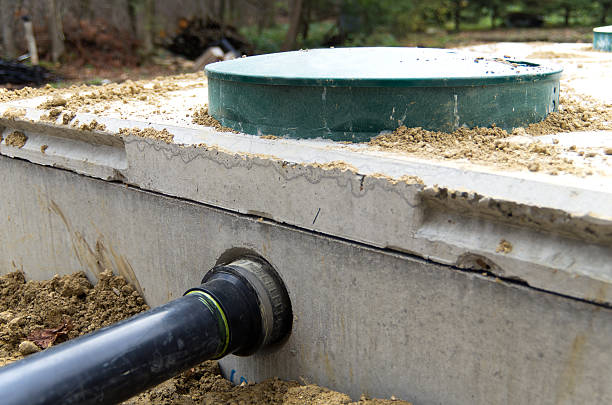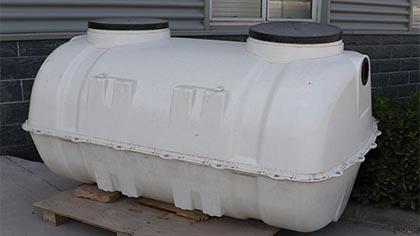Translating the Language of Septic System Providers: A Glossary of Terms for Clear Interaction and Recognizing
In this write-up, we'll help you translate the language of septic tank solutions with an useful glossary of terms. From understanding the fundamentals of your septic container to dealing with sludge build-up, we'll offer clear descriptions to make sure clear interaction and understanding.
Septic System: Understanding the Fundamentals

If you are strange with septic systems, they are below ground containers that deal with and hold wastewater from your household. These storage tanks are a crucial part of your home's plumbing system, in charge of safely and properly taking care of the waste generated by your daily activities. Recognizing the basics of sewage-disposal tanks is essential in order to guarantee their correct functionality and prevent expensive fixings.
A septic tank is composed of two primary parts: the tank itself and the drainfield. The solids work out at the bottom of the storage tank, developing a layer of sludge, while the fluids, understood as effluent, surge to the top.
Regular upkeep of your septic container is vital to prevent problems such as clogs, backups, and system failures. It is recommended to have your tank pumped every 3 to five years, depending on its dimension and usage. Additionally, it is crucial to be conscious of what you purge away and commodes, as specific chemicals and materials can hurt the microbial balance in the container.
Drainpipe Field: The Role of Soil in Waste Disposal
To maintain the correct functionality of your septic storage tank system, it is important to comprehend the duty of the drain area in garbage disposal and just how the bordering dirt plays an essential function in this process. The drainpipe area, additionally known as the leach field or absorption field, is a crucial component of a septic tank. Its primary feature is to filter and deal with the wastewater that moves out of the septic storage tank.
Once the wastewater leaves the septic system, it is dispersed evenly throughout the drain area through a network of trenches or pipes. The drain field is composed of a layer of crushed rock or rock, which helps to distribute the wastewater evenly and promote efficient purification. Listed below the crushed rock layer, there is a layer of dirt that acts as an all-natural filter.
The dirt in the drainpipe area plays a vital duty in the treatment of wastewater. As the wastewater percolates with the soil, it undertakes a natural process of filtering and filtration. The soil serves as a biological and physical filter, eliminating damaging germs, infections, and various other contaminants from the wastewater.
The make-up and quality of the dirt are crucial for the effective performance of the drainpipe field - septic tank pumping. The soil needs to have great percolation prices to permit the wastewater to move via it quickly. Additionally, the soil should have sufficient oxygen degrees to sustain the growth of cardiovascular microorganisms, which aid in the failure of organic Your Domain Name matter in the wastewater

Effluent: the Fluid Waste From Your Septic Tank
As the wastewater leaves the drain area, it is referred to as effluent, and it is very important to comprehend the characteristics and administration of this liquid waste from your septic tank. Effluent is the term made use of to define the cured wastewater that streams out of your septic container and into the drainpipe area. septic tank pumping. This fluid waste includes a mix of water, natural issue, and liquified solids
Effluent should be complimentary and clear of any type of undesirable smells. It could be an indicator of an issue with your septic system if you observe any kind of foul scents or discoloration. Regular upkeep and pumping of your septic system can help ensure that the effluent stays free and tidy from impurities.
Correct monitoring of effluent is essential to stop contamination of the surrounding environment. The drainpipe field is developed to filter and treat the effluent before it goes into the dirt. It is necessary to stay clear of any type of tasks that might potentially damage the drain field, such as vehicle parking cars or growing trees with deep origin systems.
Sludge: Handling Strong Waste Accumulation
When dealing with strong waste buildup in your septic system, correct monitoring of sludge is vital. Sludge describes the thick layer of strong waste that accumulates at the end of your septic tank in time. Otherwise handled effectively, sludge can create different issues, such as blocking, back-ups, and even system failing.
Regular maintenance is crucial to prevent sludge build-up. It is suggested to have your septic tank pumped every 3 to 5 years, depending upon the dimension of your home and the container's capacity. Pumping eliminates the accumulated sludge, permitting your septic system to operate successfully.
In addition to regular pumping, there are a few actions you can take to reduce sludge build-up. First, be conscious of what you flush down the tubes. Stay clear of disposing of non-biodegradable products, such as paper towels, baby diapers, and hygienic products. These can contribute to sludge build-up. Second, take into consideration using septic-safe products that will not interfere with the all-natural microbial balance in your system.
Pumping: Maintaining the Wellness of Your Septic System
Preserve the health and wellness of your septic tank by frequently pumping it. Over time, strong waste and sludge build up in the tank, which can lead to clogs, back-ups, and even system failure.
The frequency of pumping depends on numerous elements such as the size of the storage tank, the number of occupants in your household, and the use of water. On average, septic tanks ought to be pumped every 3 YOURURL.com to five years.
Conclusion
So there you have it: an useful reference of terms to help you much better comprehend the language of septic system solutions. Whether it's learning more about the essentials of septic containers, comprehending the duty of the drain field, or knowing exactly how to manage sludge accumulation, this reference will ensure clear interaction and a much better understanding of your septic tank. Maintain these terms in mind to preserve the health and wellness and capability of your septic container.
A septic container is composed of two main elements: the container itself and the drainfield.Normal maintenance of your septic tank is essential to avoid concerns such as blockages, back-ups, and system failures.To preserve the proper capability of your septic tank system, it is essential to understand the function of the drainpipe field in waste disposal and just how the surrounding soil plays a key duty in this procedure. It is recommended to have your septic tank pumped every 3 to five years, depending on the size of your family and the storage tank's capacity. Whether it's finding out concerning the essentials of septic storage tanks, comprehending the function of the drain field, or recognizing exactly how to deal with sludge build-up, this glossary will ensure clear interaction and a far better understanding of your septic system.